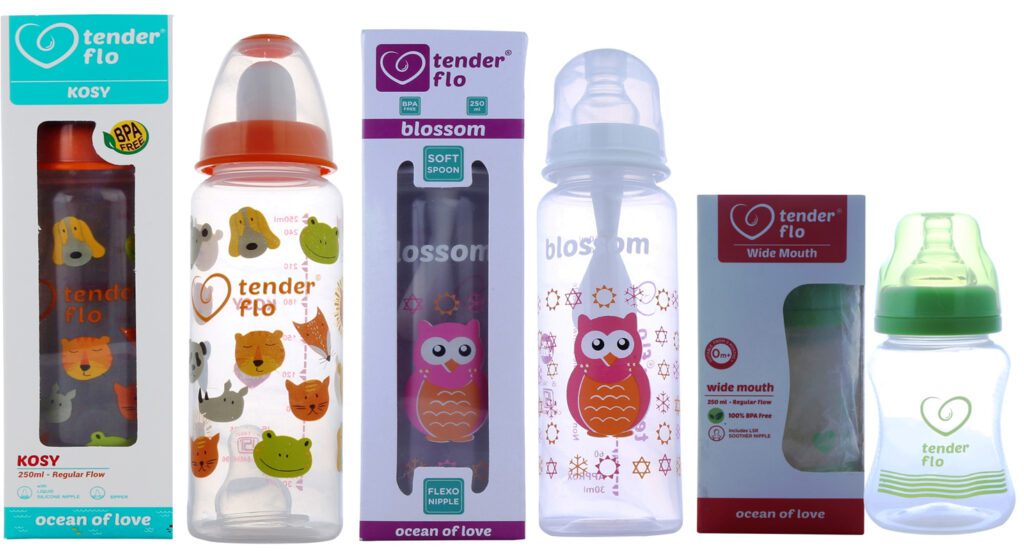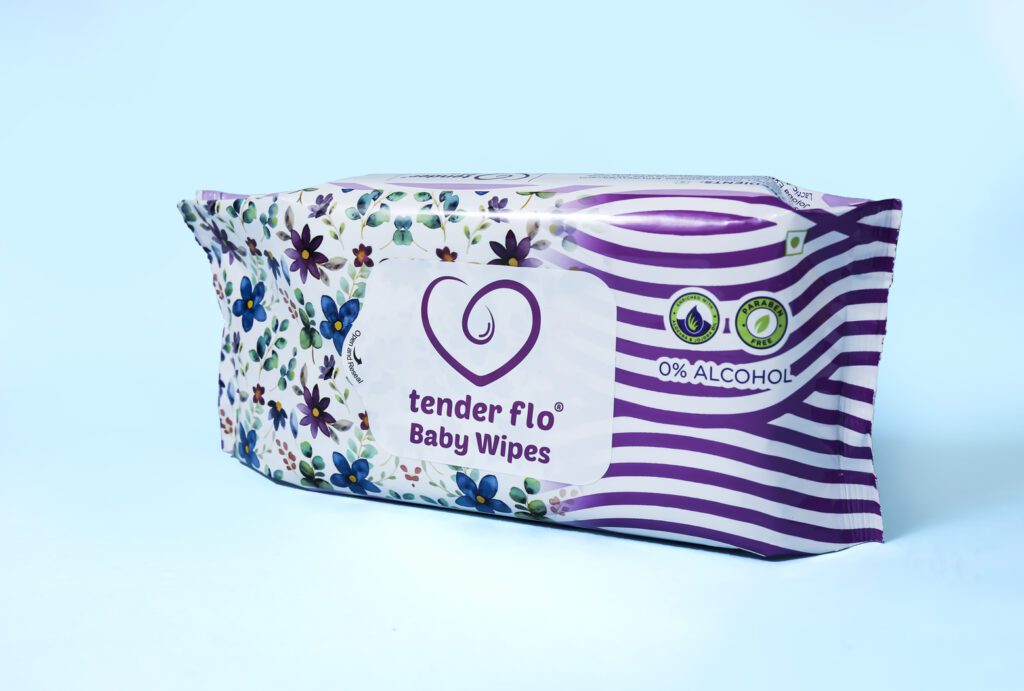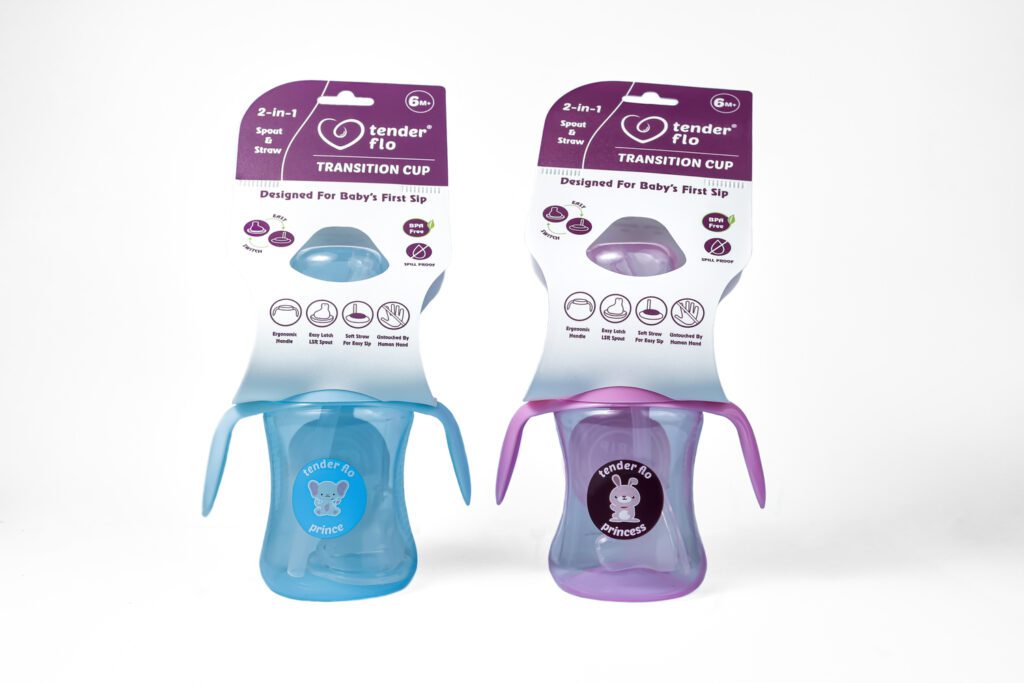Baby Feeding Bottles (BPA Free)
🍼 Types of Baby Feeding Bottles
-
Standard Bottles
-
Traditional shape, easy to find and use.
-
Compatible with most nipples.
-
-
Angled Bottles
-
Designed to reduce ear infections and gas by keeping the nipple full of milk.
-
-
Wide-Neck Bottles
-
Mimic the breast more closely; easier to clean.
-
Often used with breastfed babies.
-
-
Vented Bottles (Anti-Colic)
-
Have internal vents or valves to reduce air intake, helping prevent gas and colic.
-
-
Disposable Liner Bottles
-
Pre-sterilized liners reduce cleaning time.
-
Great for travel but more expensive over time.
-
🧴 Bottle Materials
| Material | Pros | Cons |
|---|---|---|
| Plastic | Lightweight, unbreakable | Can wear out, BPA concerns (choose BPA-free) |
| Glass | Durable, easy to sterilize | Heavier, breakable |
| Silicone | Flexible, lightweight, safe | More expensive, rare |
| Stainless Steel | Durable, chemical-free | Opaque (hard to see milk), pricey |
🧼 Cleaning and Sterilization
-
Before first use: Sterilize by boiling, using a sterilizer, or dishwasher (top rack).
-
After each use: Wash bottles, nipples, and rings with hot soapy water or dishwasher.
-
Sterilization (optional but ideal for newborns): Every few days for babies under 3 months.
📝 Tips for Choosing the Right Bottle
-
Try a few different types to see what your baby likes.
-
Match nipple flow (slow, medium, fast) to baby’s age and preference.
-
Choose bottles with measurement markings that are easy to read.
-
For breastfed babies, opt for wide-neck bottles that mimic the breast.
BPA-free baby feeding bottles means that a product does not contain bisphenol A (BPA), a chemical used in some plastics and resins that has raised health concerns, especially for babies and young children.
🧪 What is BPA?
-
BPA (Bisphenol A) is a synthetic compound used to make certain plastics and resins.
-
It’s commonly found in polycarbonate plastics (used in older baby bottles, water bottles, food containers) and epoxy resins (used to coat the inside of metal food cans).
⚠️ Why Avoid BPA in Baby Feeding Bottles?
Studies suggest BPA may:
-
Disrupt hormones (especially estrogen)
-
Affect brain development and behavior
-
Influence infant and child growth
-
Potentially increase the risk of heart disease or cancer (ongoing research)
Because of these concerns, BPA is especially avoided in:
-
Baby Feeding bottles
-
Sippy cups
-
Infant formula containers
-
Pacifiers and teething toys
✅ What Does “BPA-Free” Mean?
-
The product is made without any BPA.
-
Usually replaced with safer materials like polypropylene, silicone, or glass.
-
Look for packaging labeled “BPA-Free”, or marked with recycling codes 1, 2, 4, or 5 (avoid 7 unless it says BPA-free).
To ensure baby feeding bottles (or any baby product) is truly BPA-free, follow these simple steps:
✅ 1. Check the Label
-
Look for a clear “BPA-Free” label on the packaging or product itself.
-
Reputable brands almost always state this on the box or bottle base.
✅ 2. Look at the Recycling Code
-
On plastic bottles, check the triangle symbol on the bottom:
Code Material Type BPA-Free? 1 PET or PETE ✅ Yes 2 HDPE ✅ Yes 4 LDPE ✅ Yes 5 Polypropylene (PP) ✅ Yes 7 Other (Mixed Plastics) ⚠️ Maybe – Can contain BPA unless marked BPA-free
❗ Avoid Code #7 unless it specifically says “BPA-Free.”
✅ 3. Buy from Trusted Brands
-
Stick with well-known baby brands like TENDERFLO, which all offer BPA-free products.
✅ 4. Choose Alternative Materials
-
If you’re unsure about plastic:
-
Go with glass, food-grade silicone, or stainless steel bottles—they’re naturally BPA-free.
-
✅ 5. Avoid Old Bottles (Pre-2012)
-
Many older baby bottles (especially hand-me-downs) may still contain BPA.
-
Safer to replace them with new BPA-free versions.



